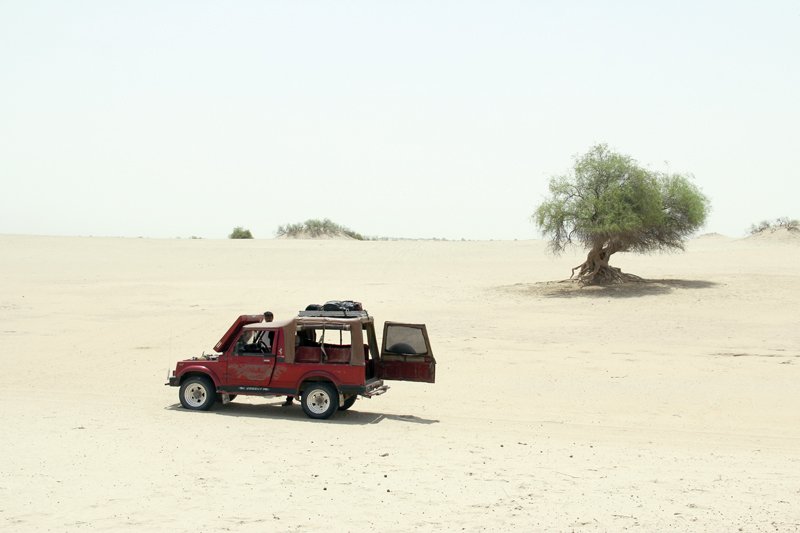
It is estimated that around 1.5 million acres of Sindh's land was covered with forests. "There are hardly 10,000 acres of forests now," said environmentalist Nasir Ali Panhwar. "It is a black era for forests of Sindh and it began in 2008." The situation has become increasingly alarming since the early 90s with hardly 10,000 acres of land remaining covered by trees today.
Since 1995, the World Day to Combat Desertification and Drought is observed on June 17 with the aim of raising awareness. Ironically, not a single lawmaker in the Sindh Assembly has bothered to redress the reasons of desertification and its consequences in the province, said a senior forest officer requesting anonymity.
Deforestation stays the major reason of desertification in Sindh. A forest officer shared gloomy details about the condition in the country. Only five per cent of the total land in Pakistan has green cover, of which Sindh remains in the most terrible state. "The tree cover in Sindh is estimated to be about 4.8 per cent," said the officer. "But this figure is almost 15 years old and I'm convinced that now it is no more than one per cent."
Counting biological factors, Dr Ghulam Rasool Keerio, a retired forest officer and consultant on environment, said there has been no rainfall for the last couple of years in Sindh. "There was a time when there were forests on private land too," he recalled. "There was ample water for agriculture as well as forests but we are short of it now."
"The populations of humans and cattle are increasing. The rural population use trees as firewood. After all, illiteracy and poverty are also reasons of desertification," he said. "We have scattered forests in Sindh now and several species are missing. The sea intrusion encroached upon as much as 2.2 million acres of land."
According to another forest officer, tribal clashes on forest land in different districts, such as Shikarpur, Sukkur, Khairpur and Kashmore, greatly contribute to deforestation. People sell the wood from trees to enhance their living and use the land to suit their purposes.
The aftermath
Environmentalists and forest experts believe that desertification has led to several problems in Sindh, such as famine, droughts, floods and shortage of food.
"The soil has reduced its productivity because of desertification," said Panhwar. He predicted that the state of affairs will be more gruesome in the future. Moreover, he believes that the provincial government is least bothered about the management of natural resources. Reminding that Pakistan signed the United Nations Convention to Combat Desertification, he called for appropriate measures to be taken as a responsible nation. "We need to work seriously in the direction of forestation and agro-forestation."
Government denies desertification
Forest department chief conservator Riaz Ahmed Waghan denied that there is desertification in Sindh. "There is only deforestation and we can't initiate timely plantation because of lack of funding," he added. Waghan said that there is around 2.5 million acres of forest cover in Sindh. This includes 0.6 million acres for riverine forests, 125,000 acres for irrigated forests and 1.5 million acres for mangroves.
According to another officer, the power of a forest officer to detain an offender for at least 24 hours is of no use now. "He [the officer] will be behind the bars if he dares to detain any one," he informed, adding that the forest mafia has political influence in Sindh.
Published in The Express Tribune, June 18th, 2014.
1731570357-0/elon-musk-(1)1731570357-0-405x300.webp)
-(1)1717678110-0/Kendrick-(1)-(1)1717678110-0-165x106.webp)















COMMENTS
Comments are moderated and generally will be posted if they are on-topic and not abusive.
For more information, please see our Comments FAQ